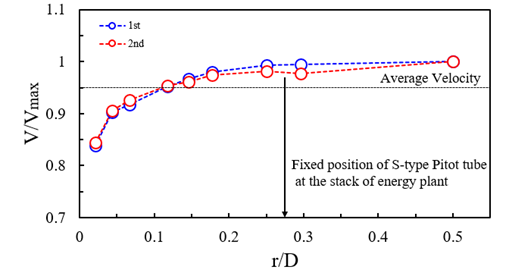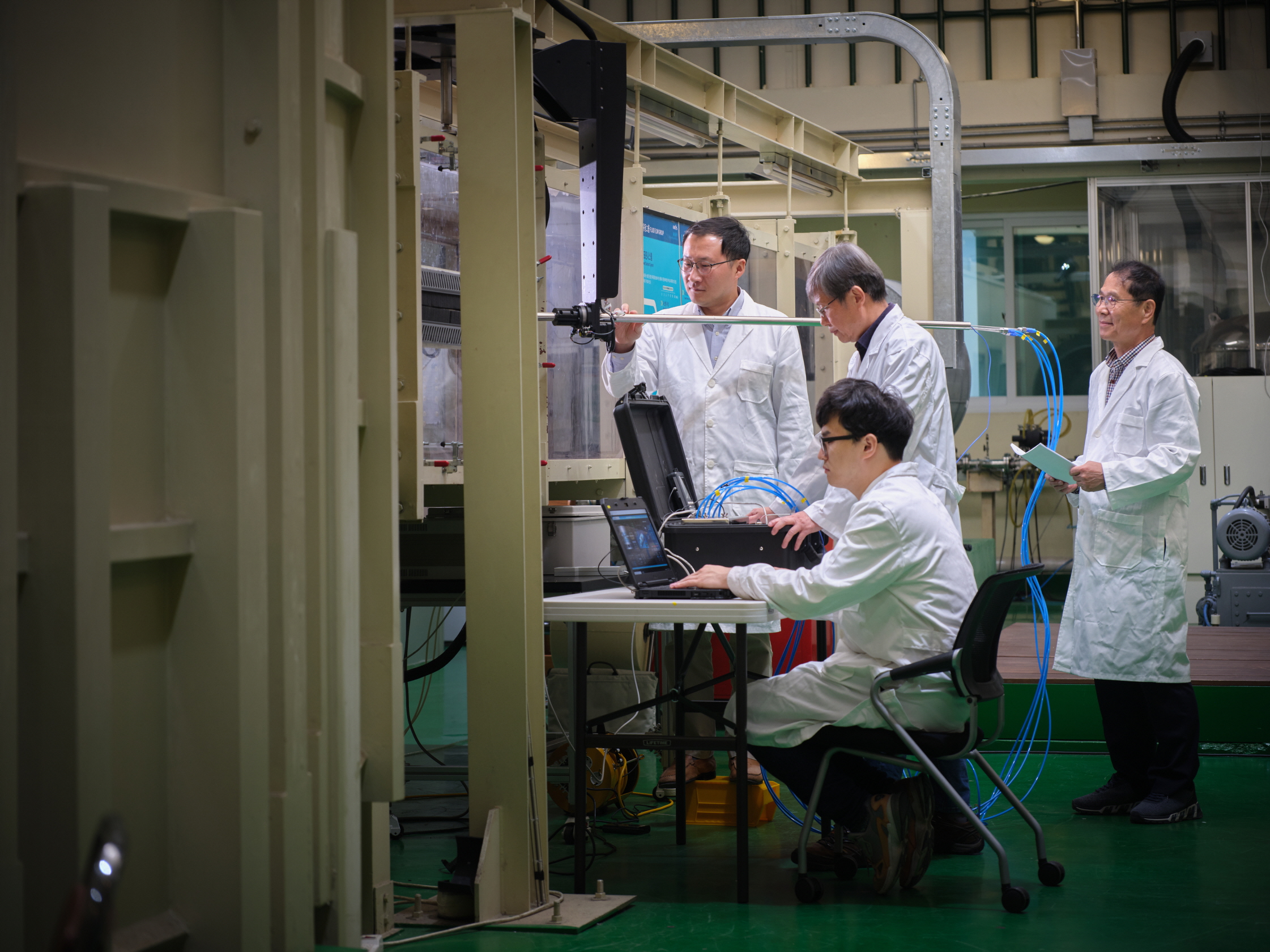Flow rate in smokestacks key to estimating greenhouse gas emissions
- Writerkrissadmin
- Date2020-11-11 00:00
- Hits738
Flow rate in smokestacks key to estimating greenhouse gas emissions
- New technology allows accurate measurements of greenhouse gas emissions of local industries and power plants -
The Korea Research Institute of Standards and Science (KRISS, President Hyun-Min Park) developed a new technique to accurately measure greenhouse gas emissions of local industries and power plants.

▲ Principal researcher Woong Kang of the Thermometry and Fluid Flow Metrology Group
The team, led by principal researcher Woong Kang of the Thermometry and Fluid Flow Metrology Group, developed a technique to evaluate emission flow, which is a key factor that determines total greenhouse gas emissions of local industries and power plants. The team is the first in Korea to reveal that the measurement uncertainty of flow rate in smokestacks is the key factor determining emission flow. The proposed technique is expected to contribute to a cleaner atmosphere, and enhance the reliability of greenhouse gas emissions trading.
Countries around the world are exerting efforts to reduce greenhouse gas emissions. As the world’s tenth largest greenhouse gas emitter, Korea introduced a greenhouse gas emissions trading scheme in 2015. Since an increase or decrease in greenhouse gas emissions can incur astronomical costs, it is important to ensure the accuracy and fairness of emission calculations.

▲ How to estimate greenhouse gas emissions
The methods of measuring greenhouse gas emissions can be divided into calculation and actual measurement. The former is a theoretical method that involves fuel use and emission coefficient. The latter is an experiment-based continuous monitoring method that directly measures the emission concentration and flow rate of greenhouse gas emissions. Concentration is multiplied with flow rate to determine greenhouse gas emissions in the unit of kilograms.
The calculation method is more widespread despite the accuracy of continuous monitoring method because there are more studies on emission concentration than emission flow. Obtaining accurate measurements of emission flow is highly challenging as it is influenced by smokestack structure, flow distribution in smokestacks, and operating conditions. The accuracy of emission depends on the accuracy of various factors such as smokestack diameter, pressure, temperature, moisture, and flow rate.

▲ The measurement uncertainty of smokestack emission flow by continuous monitoring method
Smokestack emission flow was estimated to have an uncertainty between 5 % and 10 %. Uncertainty is an indicator of the reliability of measurements. A variable with high uncertainty will have a larger error with each measurement. Uncertainty must be reduced to enhance measurement reliability. Before this study, emission flow uncertainty evaluation has not been examined using real-time measurements from smokestacks.

▲ An S-type Pitot tube
Principal researcher Woong Kang and his team resolved previously known issues by utilizing their expertise in fluid flow. They measured flow distribution at different positions in smokestacks using an S-type Pitot tube, which is commonly used by power plants in Korea. Based on actual measurements taken by a smokestack telemonitoring system* in a power plant, they applied the flow measurement uncertainty equation** of ISO-GUM to evaluate uncertainty.
* Smokestack telemonitoring system (CleanSYS): A system for real-time measurement and management of pollutants emitted from smokestacks in Korea
** Flow measurement uncertainty equation: An equation used to measure uncertainty based on flow measurement theory


▲ Flow distribution in smokestacks estimated using an S-type Pitot tube
The team showed that the measurement uncertainty of smokestack emission flow of local industries and power plants was 3.8 % (k=2, confidence level of approximately 95 %), and identified flow rate in smokestacks as the main uncertainty factor.
Principal researcher Woong Kang said, “We are conducting joint research with metrology institutes in the United States and China, which are countries that have enforced regulations concerning greenhouse gas emissions. We will enhance the reliability and fairness of greenhouse gas emissions trading by securing 3D smokestack flow measurement technology and establishing a standard testbed for smokestack emissions.”

▲ The research team of KRISS is conducting an experiment with a device imitating a chimney.
Supported by KRISS, the study was published in Metrologia (IF: 3.447), a prestigious international journal in measurement science.

